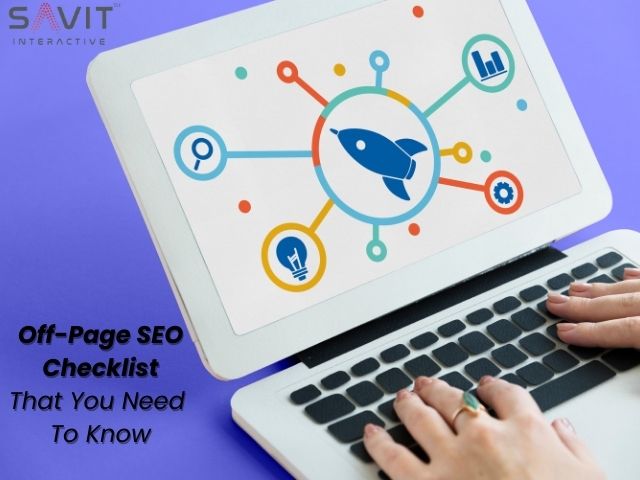What are Off page Activities?
Off page SEO, sometimes called off-site SEO, is the practice of increasing your website’s authority and visibility by promoting it on other websites.
Are you looking for an off-page SEO checklist to help Google rank your website higher?
The most effective technique to increase traffic to your website is search engine optimisation (SEO). Off page SEO is crucial, especially if you’re pursuing competitive keywords. While many individuals concentrate on on-page optimization strategies like targeting a focus keyword, it’s equally important to consider off-page SEO activities list as well.
This off page SEO activities list was developed for that reason. Using a few straightforward strategies, you should ensure that outside sources, social media sites, and other internet resources influence your search engine rankings. We’ll go over what off page SEO activities list should be added. Let’s get going!
Here are 5 top Off-page SEO checklist:-
Valuable Backlinks:
A backlink is a URL pointing to your content from another website or internet source. This link informs the search engines that another party thinks highly of your material. The good news for your rankings is this. You can take action to promote these beneficial backlinks. List pieces, quizzes, videos, infographics, and how-to articles are more likely to generate backlinks. With Link Explorer, you can also carry out a link gap analysis. This technique entails finding websites that connect to your rivals’ material rather than your own. Next, you can contact them or find out what content they like to read. You could obtain beneficial backlinks from these sources by writing articles that are similar to them.
So, to rank in your google, your first and important off page SEO activities list should have secured and valuable backlinks.
Be Active On Social Media
You can draw attention from various sources by sharing your material on social media. This variety might persuade search engines that your website is beneficial to users all over the internet. You’re off to a terrific start if you’re advertising your social media content. However, responding to each mention of your goods or company can also increase engagement.
Thus, include social media activity in your list of off-page SEO checklist.
Guest Posting
Some websites allow visitors to submit content. These articles present fantastic chances to obtain worthwhile backlinks. Each website will have its guidelines for welcoming contributors. You can add multiple Links to your guest posts on some websites. On some platforms, your author bio is limited to mentioning your business or products. Publishing top-notch material on independent websites frequently allows you to reach a new audience. This can encourage more visitors to your website.
Therefore, do some guest posting and rank your website on Google. Indeed, guest posting should be added to your off page SEO activities list.
Look at the comment Section
It could be tempting to see every other website as a rival. Nonetheless, it’s frequently possible to identify websites operating in your preferred niche rather than your direct competitors. Once you’ve located these websites, participating in their comment areas is a good idea. You can establish yourself as a key figure in your field by continuously providing valuable, constructive contributions. The website’s audience may eventually become aware of your contributions and visit your profile. Your visitor count may improve due to this enhanced visibility, which can also add a new traffic source to your arsenal.
A link to your website can also be included in comments on many websites. Even though these links aren’t particularly effective, every little bit helps with off-page SEO. Therefore, add this as well to your off page SEO activities list.
Document Sharing
Think about posting some of your documents on sites like SlideShare, Issuu, or Scribd. These websites are excellent for content like PDFs and PowerPoint files that search engines can’t crawl. Treat content you post on a website where documents are shared as if it were for your page: Identify a list of keywords to target using keyword research, then optimise specific sections of the content as though they were typical on-page SEO components:
When uploading your documents, give them file names that contain plenty of keywords. Use lowercase characters, avoid underscores between words, and other SEO-intelligent practices.
Titles: Just like with title tags for a web page, optimize your titles. Include your goal keyword at the start, and don’t exceed 50–60 characters.
Provide a transcript of the content for any PowerPoint presentations or movies. Otherwise, crawlers won’t find your keywords because they can’t understand certain file types.
Create compelling calls to action to complement your content and direct readers to your website. To rank your content for keywords that your site can’t compete for, you can leverage the ranking strength of the hosting site. Create optimized landing pages to convert visitors who click through to your website. Image and video sharing is also the most important and beneficial activity, so add it to your Off page Seo Activities list.
Image Sharing:
Share and publish your photos on websites like Flickr, Pinterest, or Photobucket. These pages can be utilized virtually like a social network or file-sharing website. Observe recommended practices for optimizing file names and titles and add a description with your keywords in it. In the description, include a link leading back to your pages. Having your content linked to these pages is advantageous because they often have high PageRank and trust ratings. Also, visitors can comment on and share your material, raising your brand’s exposure.
Video Sharing:
One of the most widely used online information formats, particularly for advertising, is video: Users spend a third of their online time watching videos. Also, it’s a requirement for companies: According to 55% of customers, a firm’s website should have a video. So, making short, interesting films with high production quality increase audience interest in your material. Share your video clip on websites like YouTube, Vimeo, and Dailymotion if you do so.
Establish a profile using your company name and use filenames and video titles that adhere to document sharing best standards. Include a website link and incorporate your keywords into the video description. The links are still crawled, indexed, and served in search results even when they don’t pass link juice.
Conclusion:
As you can see, off page SEO activities list involves much more than link development and link juice, even though that is the off-page duty on which SEOs spend most of their time concentrating. But remember that SEO is a continuous activity and not a one-time purchase. You’ll find yourself returning to some of the steps on this list more than others. But if you do it correctly, it will take some time before you realise an increase in visitors and, hopefully, conversions.








































